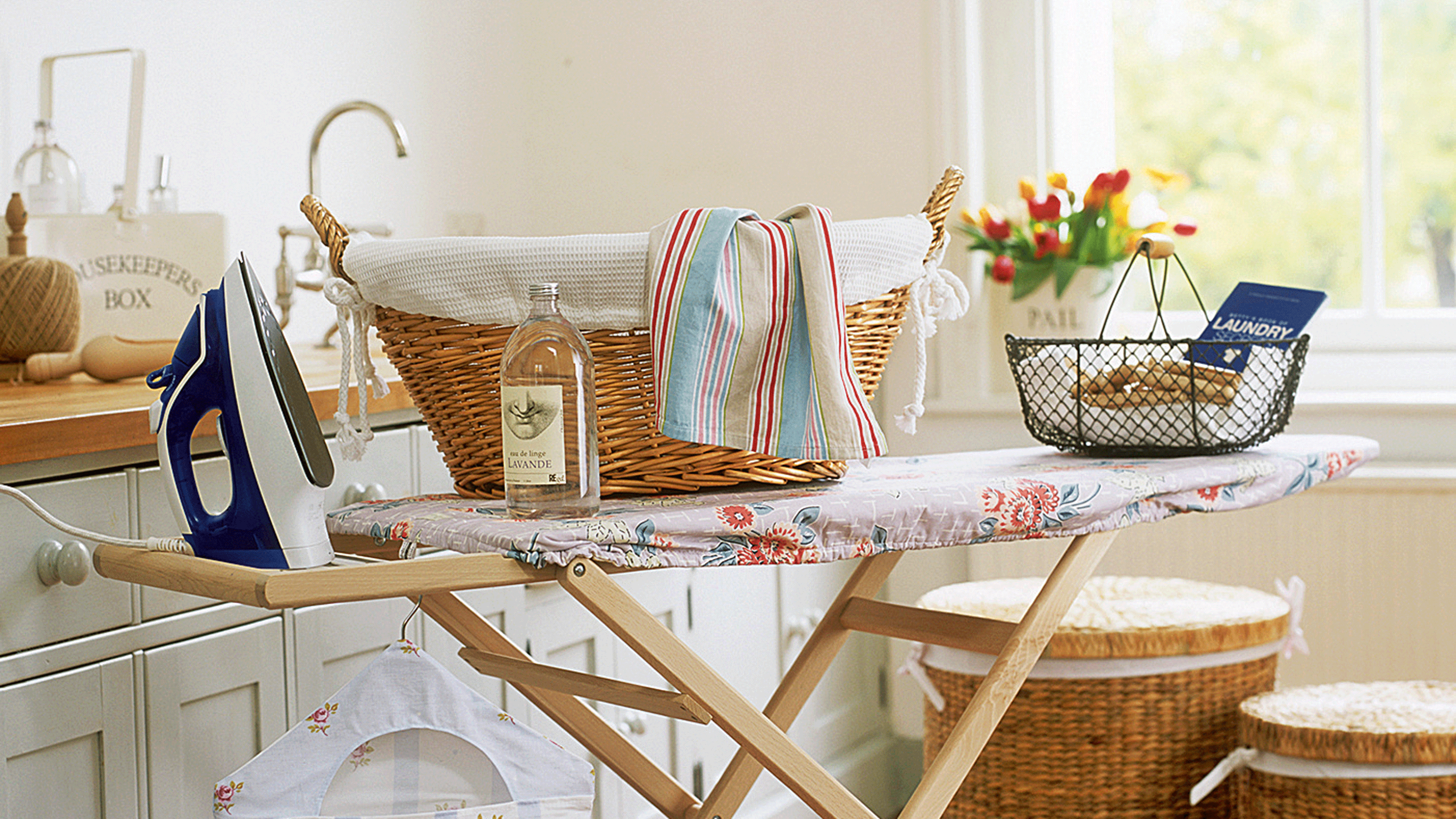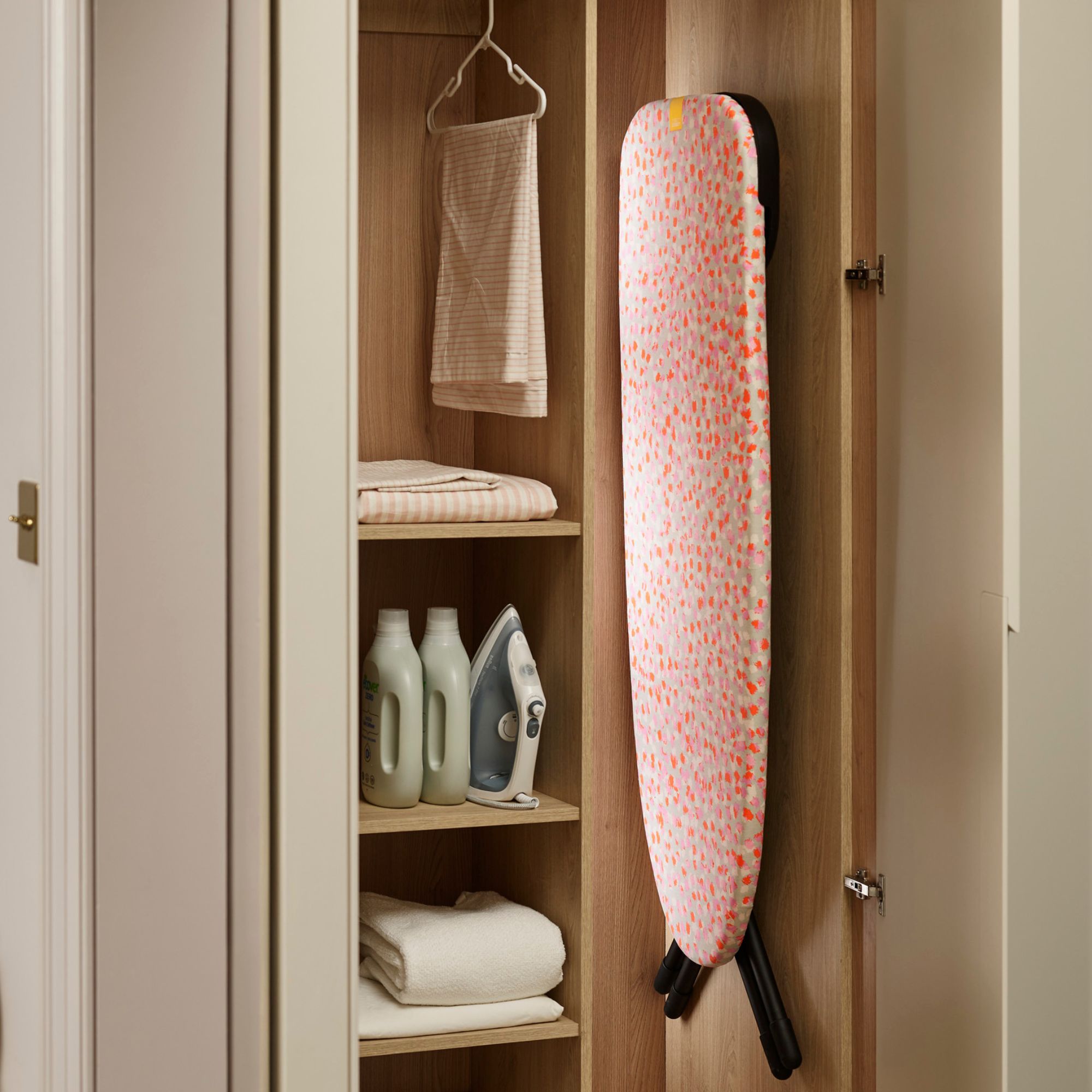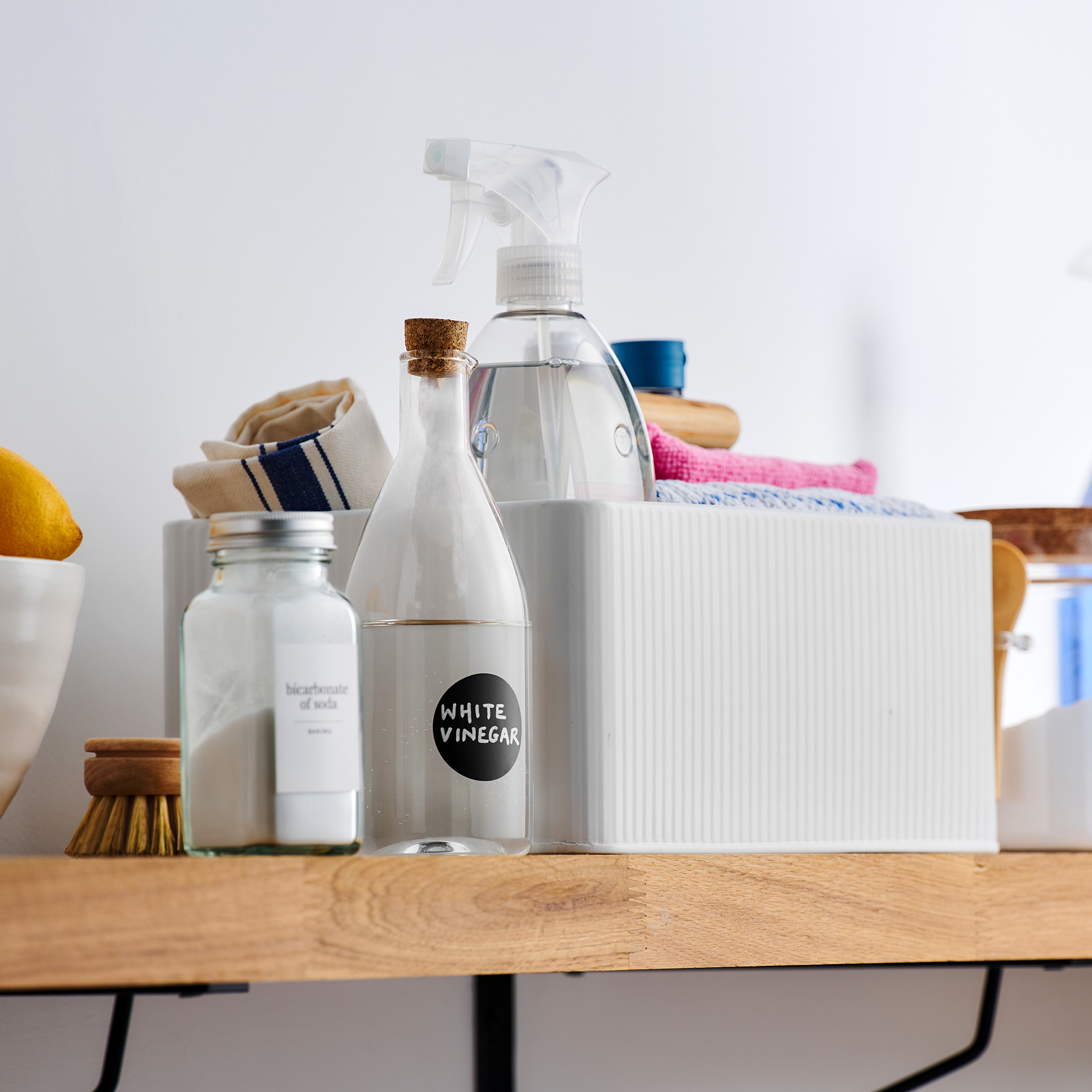How to clean a burnt iron - an easy method to make a scorched soleplate look like new
All you need are two store cupboard essentials


There’s nothing worse than dirtying a fresh white shirt with a scorched iron, but the solution to this problem is simple if you know how to clean a burnt iron.
Sure, most people already know how to clean an iron. But giving your best steam iron a basic clean every few months just won’t cut it when it’s covered with a burnt residue that threatens to stick to your freshly washed clothes. Left too long, and your iron will drag along your clothes, leaving dark stains in its wake.
Cleaning a burnt iron requires a certain level of brute force and the right cleaning products to get the job done. That’s why we’ve consulted with cleaning experts to provide you with an easy step-by-step guide that’ll see your clean iron gliding again in no time.
How to clean a burnt iron
Ironing your clothes with a burnt soleplate is a recipe for disaster. Not only will your iron have to work harder to heat itself up (and ultimately cost you more money on your energy bills), but it can also cause irreparable damage to your clothes. So, always make sure you know how to clean a burnt iron properly.

What you'll need
- White vinegar
- Baking soda
- Two microfibre cloths
- Cotton buds
Step-by-step
1. Turn off and empty your iron
You should always take extra care when cleaning electrical appliances, and this applies when cleaning a burnt iron.
Jeremy Barltrop at G Johns & Sons Ironmongeries explains, ‘Never attempt to clean burn marks from an iron whilst it is still plugged in, so first things first, remove the plug from the wall.’
If you’re planning on cleaning your burnt iron after an ironing session, you should also empty it of water and wait until it’s fully cool and dry before getting started.
Sign up to our newsletter for style inspiration, real homes, project and garden advice and shopping know-how
2. Make a paste
If you’re a fan of cleaning with vinegar, you’ll know that this product becomes even more impressive when mixed with baking soda. You can utilise this concoction to clean a burnt iron and to do this, you’ll need to mix equal parts white vinegar and baking soda to make a paste.

3. Rub the paste onto the soleplate
Then, dip your microfibre cloth into the paste and rub it onto the soleplate of the iron. To get the most out of this step, rub in small circles rather than up and down or side to side.
The acid in the vinegar should help cut through the burnt residue, but the real star of the show is the baking soda. Ava Wilson, Chief Editor at Unclutterer, explains, ‘Bicarbonate of soda is perfect for cleaning your iron, with its mild abrasiveness able to gently lift and break down any burnt residue without damaging the iron's surface.’

Ava Wilson, Unclutterer’s Chief Editor with 25 years in cleaning, started with a mop and now leads a team of 20. Merging hands-on experience with management expertise, she transforms cleaning into inspiring lessons. Ava's eco-focused insights make Unclutterer a go-to for sustainable cleaning wisdom.
4. Leave for 30 minutes
If your iron is only slightly burnt, you might be able to get away with simply rubbing the paste into the iron’s soleplate. However, if you have particularly stubborn burnt stains, it’s better to leave the paste to work its magic.
Leaving the paste for 30 minutes should do the trick, but this will vary depending on the severity of the burnt patches.
5. Use cotton buds to clean steam holes
If you want to maintain a clean and burn-free iron, you need to ensure that it’s working as efficiently as possible. This is why you should always make sure that the steam holes are free of dirt and debris.
During this cleaning process, it’s easy to get the vinegar and baking soda paste into the steam holes. So, take this time to use a cotton bud to clear the holes of this paste before it dries and clogs them up.

6. Wipe off with damp microfibre cloth
When you’re confident that you’ve left the paste for long enough, you can then grab another clean and damp microfibre cloth to wipe it off.
As you wipe the cloth over the soleplate, you should see the burnt residue coming off with it, leaving behind a clean and sparkling iron.
Of course, if you find that this hasn’t done the trick, simply repeat the process again.
How to prevent a burnt iron
While cleaning a burnt iron isn’t a long or difficult process, it’s still a task that most people would like to avoid. Thankfully, there are many ways to prevent a burnt iron in the first place:
1. Iron on a lower temperature
One of the easiest ways to burn the soleplate of an iron is by ironing printed T-shirts. If you iron these T-shirts at a high temperature, you’ll not only burn your iron, but you’ll also ruin the T-shirt in the process. So, stick to lower temperatures when ironing these items, and try to avoid ironing over the print itself.
2. Iron clothes in a specific order
When you iron your clothes, you probably work from a random collection of clothes piled on top of your best ironing board and iron them all at the same temperature. However, it’s important to take note of low-temperature and high-temperature fabrics and always iron low-temperature fabrics first before moving onto high-temperature fabrics. If you do it the other way around, you may find that the iron is too hot for low-temperature fabrics like silk and nylon, and you may be greeted with a burnt iron as a result.
3. Clean the iron regularly
Although burn marks on clothes are normally associated with high temperatures, clogged and dirty irons can also contribute to a burnt iron. Because of this, it’s a good idea to clean your iron regularly - and this will range from once a month to once every four months, depending on how often you use it.
FAQs
How do you get black burn off an iron?
The easiest and most efficient way to get black burn off an iron is to use a mixture of baking soda and white vinegar. The acidic nature of the vinegar, the mildly abrasive nature of the baking soda, and the chemical reaction that takes place between these products will work hard to penetrate the scorching and allow you to wipe it away.
If you have a particularly stubborn black burn, however, you might want to leave the mixture of baking soda and vinegar to work its magic for around 30 minutes before wiping it off.
How do you get burnt off iron with paracetamol?
First, make sure that your iron is on the highest setting possible. When it’s at its highest temperature, you can then hold a paracetamol tablet with tweezers and rub it over the soleplate.
You should be able to see the burnt, black marks come away as you wipe, but you may need to repeat this process with another tablet if you have particularly stubborn stains.
Finish by wiping the soleplate clean with a microfibre cloth.
Can toothpaste clean burnt iron?
Yes! If you don’t have any white vinegar or baking soda handy, you can certainly use toothpaste to clean a burnt iron.
To do this, rub white toothpaste onto the soleplate and then leave it for a minute before wiping it off with a clean microfibre cloth.
Then, place your iron onto another cloth and fill up the water tank. Finish by turning it on and letting it steam for a few minutes.
Yes, cleaning a burnt iron really is as simple as that!

Lauren Bradbury has been the Content Editor for the House Manual section since January 2025 but worked with the team as a freelancer for a year and a half before that. She graduated with a Bachelor’s degree in English and Creative Writing from the University of Chichester in 2016. Then, she dipped her toe into the world of content writing, primarily focusing on home content. After years of agency work, she decided to take the plunge and become a full-time freelancer for online publications, including Real Homes and Ideal Home, before taking on this permanent role. Now, she spends her days searching for the best decluttering and cleaning hacks and creating handy how-to guides for homeowners and renters alike, as well as testing vacuums as part of her role as the Ideal Home Certified Expert in Training on Vacuums, having spent over 110 hours testing different vacuum models to date!